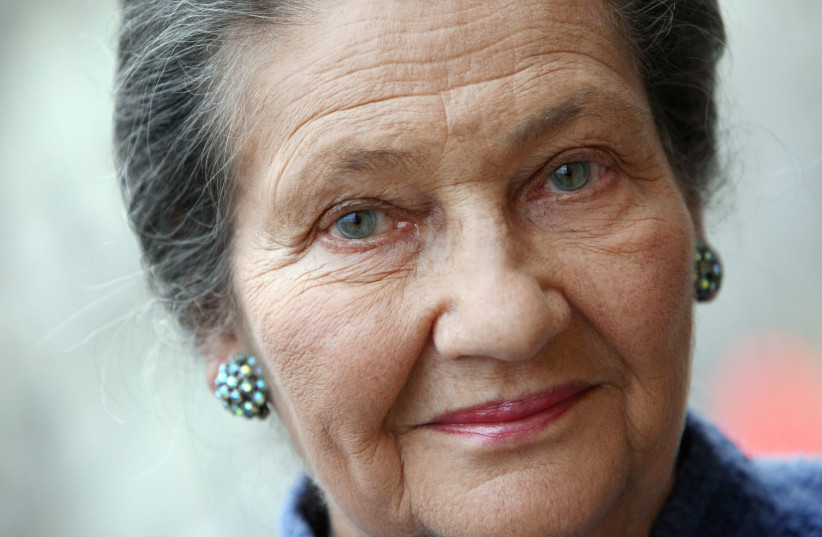PARIS – Simone Veil is certainly one of France’s most distinguished public figure and politicians. Survivor of the Auschwitz-Birkenau concentration camp, she became the first French woman to be appointed Minister of State and the first woman ever to be elected President of the European Parliament.
With France currently holding the presidency of the European Union, a special photography exposition in Paris pays tribute to Veil, whose life and destiny reflect to a great extent the reconstruction of both France and French Jews after the war.
Titled Simone Veil, A European Destiny, the exhibition was launched Tuesday at the richly-decorated Cité de l’Économie space in the 17th neighborhood of Paris. It will stay open to the public until the end of October.
The exhibition explores the life of Veil – who died in 2017 – and her European political career through 16 immersive panels, combining iconic photos from the archives of the Paris Match magazine collection and sound extracts of the main speeches that marked the very rich political career of this exceptional woman.
The idea for this exhibition came from the Cité de l’Économie. Its chief museography Xavier Limagne was looking for a figure that would best personify Europe after the war, the birth of the European Union and universal European values. The choice of Veil was obvious. Joining forces with Paris Match photography-editor-in-chief Marc Brincourt, they combed the extensive archive of the magazine, which contains some 15 million photos. Choosing just a handful to be exhibited, was certainly a challenging task, he notes.

Brincourt is guiding us through the panels. The first one features the only picture in the exhibition not recuperated from the Paris Match archives, and it is shown to the public for the first time. It is a picture of Simone Veil as a young girl, standing by her mother Yvonne and her sister Madeleine on the famous seaside promenade in Nice. The three of them are well-dressed. Simone’s mother wears an elegant hat. “It is a picture of before,’ notes Brincourt, “Before anyone knew what was going to happen in Europe. Before anyone could guess that the Veil family would be arrested by the Gestapo on March 30, 1944, shortly after Simone, the youngest of four brothers and sisters, passed her matriculation exams.”
Another striking panel is that of Veil visiting Auschwitz-Birkenau. Brincourt explains that for many years she refused to go back. Then, when Europe marked 60 years of the liberation of the camp, she agreed to go together with a Paris Match photographer, but on one condition, that all of her grandchildren will come along. And so it was. In one of the pictures, we see Veil the adult, covered in a heavy coat, standing on the background of Auschwitz train rails covered in snow.
“Most of the original buildings were destroyed by the Nazis when they fled. But one of the buildings that housed women still stands. Veil went right to this building. She entered with her grandchildren and walked directly to the spot where she, her sister and her mother slept. It was an exceptional moment,” recounts Brincourt.
Other pictures show Veil in the intimacy of her family and in her various public roles. We see her husband eating his dinner on a plate in front of a tv set, watching his wife, the politician, on the screen. We see Veil the minister, in her office with one of her daughters playing beside her on the floor. We see her in the company of former French president Jacques Chirac, former general secretary of the French Communist Party Georges Marchais and former French president Francois Mitterrand, before she was elected to the European Parliament in 1977. Veil is looking straight into the camera, defying anyone who would dare questioning her force or her authority.
